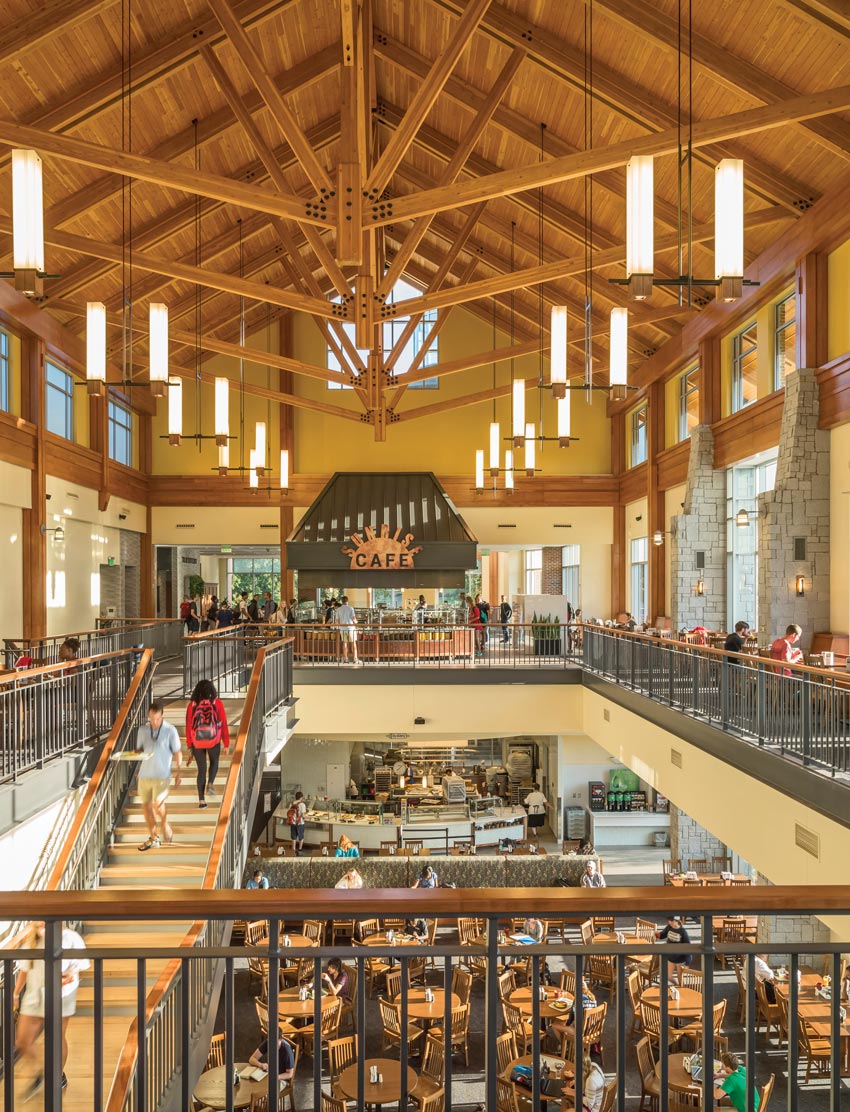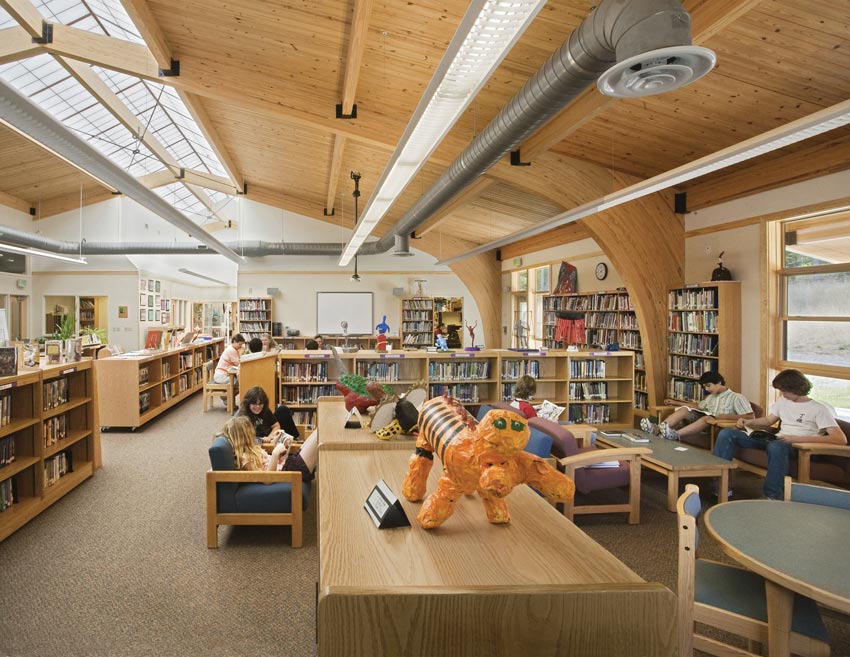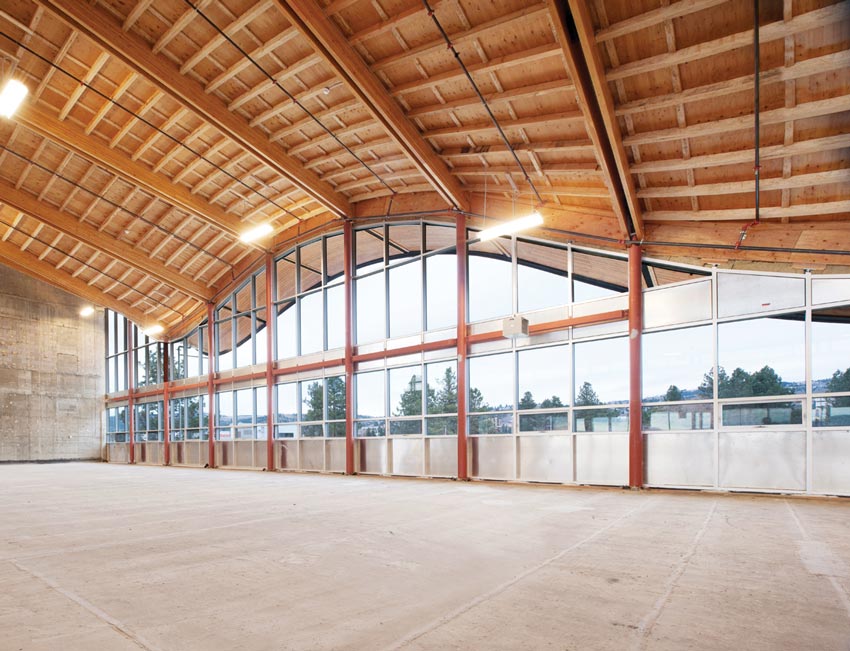Designing Modern Wood Schools
Wall Framing
Options for wall framing include solid sawn and finger-jointed dimension lumber, glulam framing, and structural composite lumber (SCL) products.
It is common in steel and concrete buildings to frame walls, both interior and exterior, with non-load bearing studs. In a wood-frame school, it can be beneficial both from a construction schedule and cost perspective to frame all walls with wood, making them load bearing where necessary for structural purposes.
In a typical steel-frame school, the building’s lateral stability against wind and seismic forces is usually provided by steel braced or moment frames or masonry shear walls. These systems may only be present in the building for the purpose of lateral load resistance. However, in a wood-frame school utilizing wood walls covered with sheathing, such as plywood or OSB, these walls can double as both gravity force-resisting members (bearing walls) and lateral force-resisting members (shear walls).
Wood-frame shear walls offer the advantages of light weight and ductility. For contrast, a typical masonry shear wall in a school might include 8-inch masonry walls with grout and reinforcing steel at 32 inches on center (o.c.). This combination has an average weight of 47 psf. A typical wood-frame shear wall in a school would be 2-by-6 studs at 16 inches o.c. with a layer of 1/2-inch plywood or OSB. This combination has an average weight of 12 psf.8
As noted, a building’s seismic forces are directly tied to its mass, meaning that the seismic forces contributed by 8-inch masonry walls would be nearly four times greater than those of the wood-frame walls. Seismic forces on a building are also directly tied to the code-specified seismic response coefficient (R). As the R term is in the denominator of the seismic force equation, a larger R value results in lower seismic forces. For seismic load resistance, wood-frame shear walls are classified as “light-frame (wood) walls sheathed with wood structural panels rated for shear resistance” (R = 6.5, per Table 12.2-1 of ASCE 7-16). This R value of 6.5 is greater than many steel and masonry lateral load-resisting systems, resulting in further reduction of seismic forces.
Tall Walls
It’s common for schools to require ‘tall walls’—20 feet and taller—to achieve desired interior heights for areas such as gymnasiums and cafeterias. Wood is both appropriate and effective in these applications.
Wood-frame tall walls offer the same benefits as other wood stud walls:
- They’re able to resist snow loads on the roof and wind loads on the wall, without requiring an additional load-bearing frame.
- When wood sheathing is added to studs, the wall is effective at resisting the lateral racking loads caused by high-wind and seismic events.
- They can be easily insulated to provide excellent thermal resistance.
- They can be finished with a wide range of finishing materials.
For these spaces, larger lumber sizes and engineered wood products can be used to obtain the same strength for walls that are taller and longer. Shear walls and connections can be easily designed to provide the required lateral resistance. Thermal requirements can be achieved with insulation. And, by paying attention to details and selecting appropriate finishing materials, tall stud walls can meet or exceed stringent fire separation requirements.













